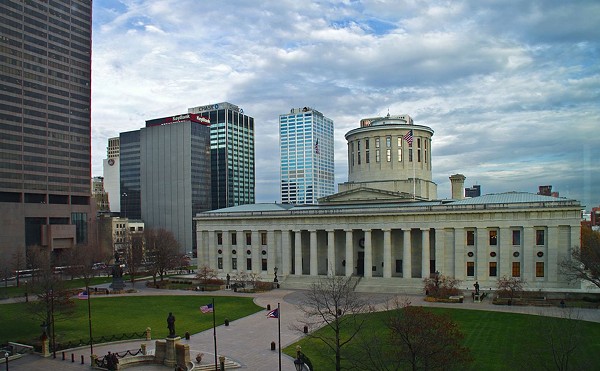I don't remember the first time I saw a TV ad for Tom Raper RV ("Exit 149-A in Richmond, Ind."), but I know it was a long time ago, maybe even the late 1970s, when I traveled mostly by bike.
It was easy to ignore the ad because it never changed. There was always the shot of the sprawling, now 60-acre facility, the carnival barker voiceover and the closing shot of RVs actually taking exit 149-A off I-70. It's the Cal Ripken Jr. of Tristate vehicular advertising.
One recent sweaty Saturday afternoon in July, mostly out of curiosity, I gave in to Tom Raper's invitations. I took Ohio Route 27 north through Oxford, through one-light towns and across the railroad tracks marking the Indiana border. A few miles more and a couple of turns took me through cheerful Liberty, Ind., then past one shoulder-high cornfield after another to Richmond. A short hop on I-70 West put me at exit 149-A, and I made the same swooping right turn I'd watched so many RVs do in the commercial.
I would like to see the western U.S. in an RV, although I couldn't afford to buy one. I was, however, mentally prepared to tangle with the salespeople.
I wouldn't turn them away immediately but would humor them, getting a tour, asking for a test drive. Maybe I'd even drive the biggest RV on the lot.
Pulling into the parking lot, I realized Tom Raper didn't give you the best RV deal by putting money into high-end architecture. Or air conditioning. It was pleasant enough inside the 150,000-square foot building, but it was clear Tom stuck with the bare necessities.
Inside, a lounge with chairs and tables gave kids and some parents a place to sit and watch Charlotte's Web, which was playing on a few mounted TVs. Nearby there were two fountain pop dispensers with Coke products and a rotating hot dog grill. Everything was free, and kids took to the scene like moths to a porch light. I helped myself to Cherry Coke but wasn't hungry enough for a hot dog.
About two dozen tiny offices, each with a window and door, lined the inside front of the building. Signs on most of them reminded salespeople to keep the door closed and the air conditioning on. A flyer on one window informed customers that some RV payments are as tax-deductible as home mortgage payments.
The place felt like an airport. Parents and retiring couples wandered around the hanger-sized building full of mostly larger RVs. There was no rear wall, and the opening led to gravel lots with dozens more RVs in all sizes and brands, again mostly newer and larger. Salespeople in bright yellow polo shirts drove around in shaded white golf carts with more families and older couples. A ballpark-style PA called people to and fro.
None of the RVs had posted prices, interest rates or any other clue about their cost. There was only a simple sticker on the windshield with the make and year and little else. Tricky, I thought.
After about 45 minutes there, I realized none of the salespeople had approached me. Feeling a bit indignant, I walked inside to the front counter and asked about prices on the van-sized vehicles. Moments later, young, buzz-cut Eddie Unger III informed me that Road Treks are the most popular van-sized brand — so popular that used ones are scarce. New ones run from $40,000 to $55,000, he said, but a used one might go for $20,000. I went to take a second look at the used Trek out back, next to the dozen or so other used RVs.
It was nice, a 1995. The interior was plush, and it had a new-looking small stove and fridge but, most amazingly, a shower/toilet combination. The shower was so small I didn't see how even an average-sized person could get clean in it without pulling a muscle.
I flagged down Ladd, a middle-aged salesman on a golf cart, and asked for the price range on a dozen or so used RVs. Ladd said $60,000 for the largest model, down to $2,995 for the cheapest one at the end. By this time I gave up on the test drive. I didn't even see the equity-rich retiring couples get that kind of treatment.
Back at the used RV area, the rust and funkiness increased as the price dropped. The model going for $2,995 was a 1980 Trans-Van, perhaps the best-traveled of all the RVs on the lot. Outside it was mostly white and had a porthole-shaped window in the back, plus bubbling window tint in the front. Inside there was a tiny sink in the rear, a shredded driver's seat, still mostly orange, and a cassette player made long before digital displays were standard.
Maybe all those hippies in their Volkswagen vans in the 1960s weren't so spaced out, I thought. Ladd had said most of these used RVs get 12 to 14 miles to the gallon. VW vans get almost 30. Or maybe a regular van would do as well.
Anyone know where the largest van dealer in the U.S. is?





